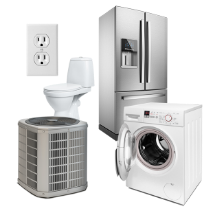With warmer weather on the horizon, it’s a great time to start planning a home addition. Whether you’re doubling the size of your home or installing a second bath, the steps are essentially the same. To ensure a seamless, successful project, consider the following tips.
Making Preparations
The larger the project, the more money, time and headaches involved. That said, virtually every remodeling project is governed by very similar elements:
- Identifying Priorities: A new addition typically requires the help of a professional designer and/or builder. Before you meet with a service provider, it’s important to get all your ducks in a row. First, target the specific objectives of your project. Does anyone in your home have special needs? Will you be adding any particular amenities? Are you simply looking to add space, or are you trying to enhance the view of beautiful surroundings? Take some time to map out potential configurations and create a wish list you can discuss with a design professional. This list should include flooring, surfaces, appliances, fixtures and structures, such as built-in seating, walk-in showers, fireplaces, islands or handicap accessible features. You should also clearly define your essential “must-haves” and any non-essentials you’d like to include if there’s room in the budget.
- Setting a Budget: There are several variables involved in construction, including materials, labor and the overall scope of a particular project. What’s more, because remodeling costs can vary regionally, it’s not always easy to estimate the total cost of a project. One great source for estimating the cost of a project is Remodeling Magazine’s “Cost vs. Value Report.” This resource surveys contractors from across the country about the cost of 35 popular projects. Data is broken down by region, and you can use the information to get a sense of your budget requirements. Just remember that many projects include unexpected problems, such as structural complications, rot, lead paint, asbestos or mechanicals that do not meet modern codes. With this in mind, it’s smart to budget out an extra 10 to 15 percent of the total project cost as a cushion against unforeseen expenses.
- Finding a Design-Build Professional: Most additions require the skills of multiple professionals. If you’d like to manage the project yourself, you can hire someone to produce the architectural drawings, followed by one or more contractors to execute the various phases of the architectural plan. In most cases, however, it’s better to hire a design-build firm to manage every aspect of your project. This is the best way to ensure a seamless process that combines project design, material selection and construction. This also ensures a single point of contact, along with easier scheduling, better cost control and clear accountability. Just make sure to ask the provider clear questions about the way he or she will design and manage the project. You should also explain the importance of maintaining regular communications, so you can make informed decisions in a timely manner.
What Are My Options?
Many homeowners have a whole laundry list of improvements they’d love to make to their properties. In most cases, however, they must prioritize projects based on need, value and available budget. Some of the most popular additions include master bedroom suites, master bathrooms, sunrooms, media rooms, kitchens and family rooms. While all offer benefits, some add more value to your home than others.
Before settling on a specific upgrade, research exactly how much value it will add to your home. If you can recoup some of the costs by increasing your home’s worth, you’ll be making a smarter investment, especially if you’re taking out a loan to fund the project.
2-10 HBW offers the most comprehensive coverage for homeowners. Let us help you get started with a Home Warranty Service Agreement today!








